Various festivals are held in various parts of Japan based on local customs.
Japanese people are usually serious and hardworking, but when the festival comes, they carry a mikoshi (portable shrine) as if they are bursting with energy. Also, wearing traditional and gorgeous kimonos that you don’t see in everyday life, they dance elegantly to the sound of drums and flutes.
Many foreigners would be surprised to see such a festival scene by chance.
Why do Japanese people get so energetic when they go to festivals?To know festivals is to know Japanese culture.You can come into contact with the history of Japan, interact with local people, and see a new side of Japan that you can’t see just by sightseeing in Japan.
Also, Japanese people become very open during festivals, so you can interact with other people only at that time.
Please go to various festivals and feel the energy of Japan.
- What are Japanese festivals?
- Recommended festivals for foreign tourists
- No. 1: Gion Festival (Kyoto City)
- No. 2: Sapporo Snow Festival (Sapporo City)
- No. 3: Aomori Nebuta Festival (Aomori City)
- No. 4: Awa Odori (Tokushima City)
- No. 5: Kishiwada Danjiri Festival (Kishiwada City)
- No. 6: Sanja Matsuri (Taito Ward, Tokyo)
- No. 7: Sendai Tanabata Festival (Sendai City)
- No. 8: Hakata Dontaku Port Festival (Fukuoka City)
- No. 9: Yosakoi Festival (Kochi City)
- No. 10: Tenjin Festival (Osaka City)
- No. 11: Akita Kanto Festival (Akita City)
- No. 12: Owara Kaze no Bon (Toyama City)
- No. 13: Okinawa Zento Eisa Festival (Okinawa City)
- No. 14: Kanda Festival (Chiyoda Ward, Tokyo)
- No. 15: Yamagata Hanagasa Festival (Yamagata City)
- No. 16: Nagasaki Lantern Festival (Nagasaki City)
- No. 17: Asakusa Samba Carnival (Taito Ward, Tokyo)
- No. 18: Nankin-machi Shunsetsu Festival (Kobe City)
- No. 19: Jidai Festival (Kyoto City)
- No. 20: Chichibu Night Festival (Chichibu City)
What are Japanese festivals?
In Japan, since ancient times, it has been believed that gods reside in all things.
In the past, Japanese people lived in harmony with nature through activities such as rice cultivation, farming, and fishing. While we enjoy the blessings of nature, we are also exposed to threats such as typhoons and droughts, so we are exposed to the sun, clouds, oceans, mountains, rivers, flora and fauna, etc. People began to believe that God (something greater than human comprehension) dwells in all things.
In spring, we sow seeds in hopes of a bountiful harvest, and in autumn, we harvest in gratitude for the harvest.We pray to the gods of nature for a bountiful harvest, health and safety. These ceremonies have become festivals, taking root in people’s lives and passed down from generation to generation.
In this way, Japanese festivals originally refer to ceremonies to give thanks to the gods. However, in modern Japan, there are festivals that have nothing to do with gods. For example, there are familiar festivals such as community and school events, seasonal events such as the snow festival and cherry blossom festival, events that celebrate history such as the Jidai Matsuri, and foreign festivals such as the samba carnival and the Chinese New Year. These festivals are indispensable festivals in Japan because they respect each other’s culture, appreciate the seasons, and connect people.
Various festivals are held in various places in Japan, but among them, “Kyoto’s Gion Festival”, “Osaka’s Tenjin Festival”, and “Tokyo’s Kanda Festival” have a long history and are large in scale. is called
Recommended festivals for foreign tourists
We will introduce Japanese festivals in a ranking format that represent Japanese culture well and are highly recommended for foreign tourists.
No. 1: Gion Festival (Kyoto City)
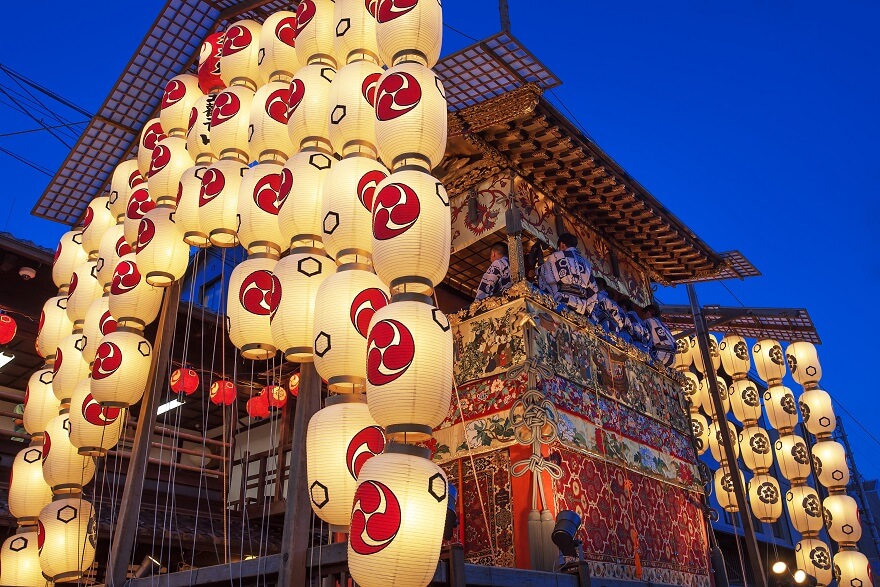
The Kyoto Gion Festival is a historical festival that has continued for over 1,100 years.This festival is held at Yasaka Shrine for one month from July 1st to July 31st every year, and is one of the three major festivals in Japan.
The highlights of the Gion Festival are the “Sakimatsuri” on July 17th and the “Atomatsuri” parade on July 24th. Yamaboko Junko is an event in which 33 gorgeous floats (23 at the Sakimatsuri and 10 at the Atomatsuri) parade through the streets of Kyoto.
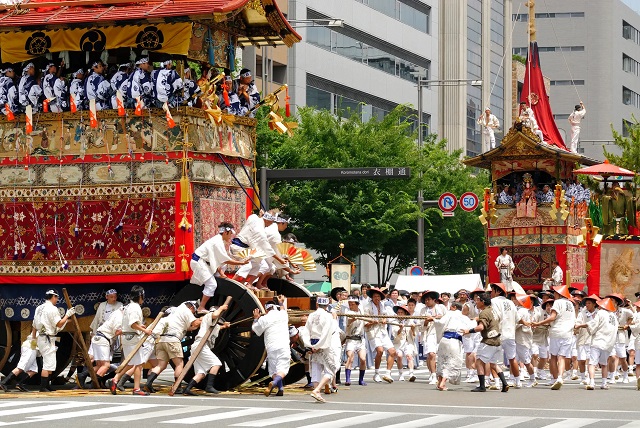
(Source: https://prtimes.jp/)
The Gion Festival is said to have started in 869. At that time, in order to appease the evil spirits that were wreaking havoc on Japan, the ancient Japanese god Susanoo-no-Mikoto was invited to Shinsen-en, the garden of the imperial family at the time. It is said that the Yamaboko Junko started as an event to purify the path ahead of the gods.This is registered as a UNESCO Intangible Cultural Heritage as “Kyoto Gion Festival Yamaboko Event”.
Gion Festival
Venue: Kyoto City, Kyoto Prefecture
Access: Hankyu “Karasuma Station”, “Kawaramachi Station”, Keihan “Gion-Shijo Station”, etc.
Period: Every year from July 1st to July 31st (Sakimatsuri is held on July 17th, and Atomatsuri is held on July 24th)
Official site: http://www.gionmatsuri.or.jp/
No. 2: Sapporo Snow Festival (Sapporo City)
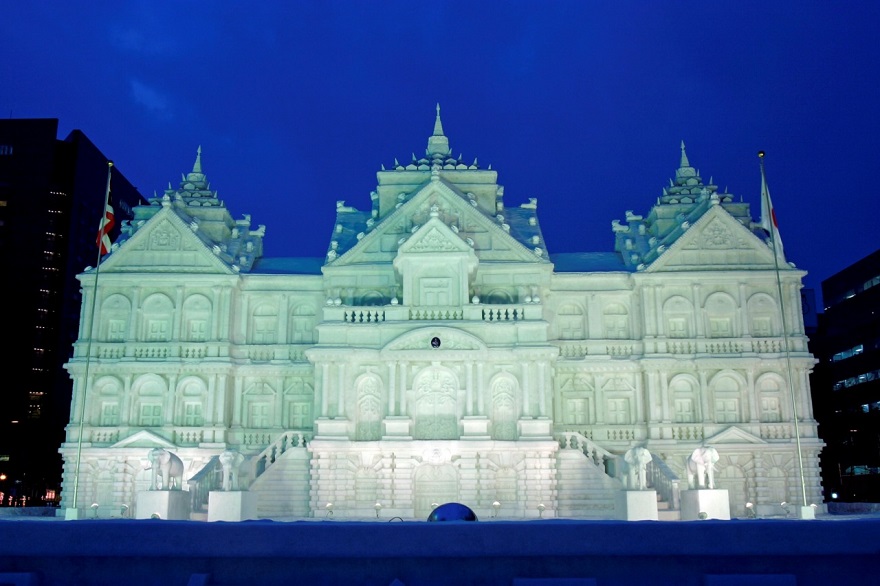
The Sapporo Snow Festival is a snow and ice festival held in Sapporo City, Hokkaido every year around February.Many sculptures of amazing quality and scale are exhibited using snow and ice, and the city becomes like a museum. In addition, it is lit up at night and projection mapping is performed, and its fantastic beauty has become very popular.It is also characterized by a large number of tourists not only from Japan but also from overseas.
In addition to the “Sapporo Snow Festival”, China’s “Harbin Ice Festival” and Canada’s “Quebec Winter Carnival” are said to be the world’s three largest snow festivals.
The Sapporo Snow Festival is held at multiple venues in Sapporo City, and the “Odori Site” along Odori Park hosts a snow sculpture contest in which teams from around the world participate, making it a place for international exchange.
In addition, the Japanese Ground Self-Defense Force has cooperated in the production of snow sculptures, and in the past, the 10-meter-tall Virgin Mary statue, “Star Wars”, Square Enix’s popular MMORPG “Final Fantasy XIV”, etc. The statue was also produced by the Ground Self-Defense Force.
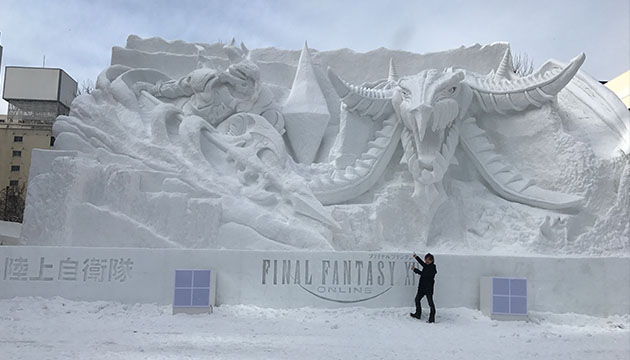
(Source: https://jp.finalfantasyxiv.com/)
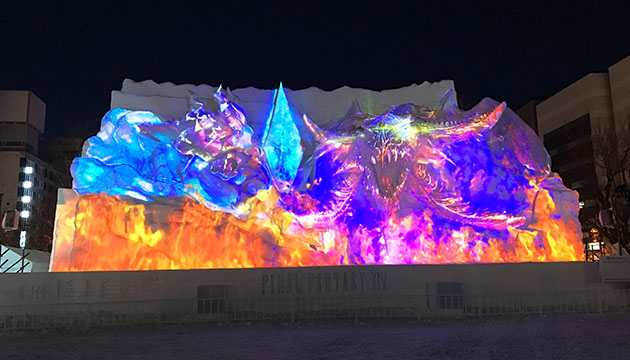
(Source: https://jp.finalfantasyxiv.com/)
Sapporo Snow Festival
Venue: Sapporo, Hokkaido (Odori venue, Susukino venue, Tsudome venue)
Access: New Chitose Airport → JR Sapporo Station (details are available on the official website)
Period: around February every year
Official site: https://www.snowfes.com/
No. 3: Aomori Nebuta Festival (Aomori City)
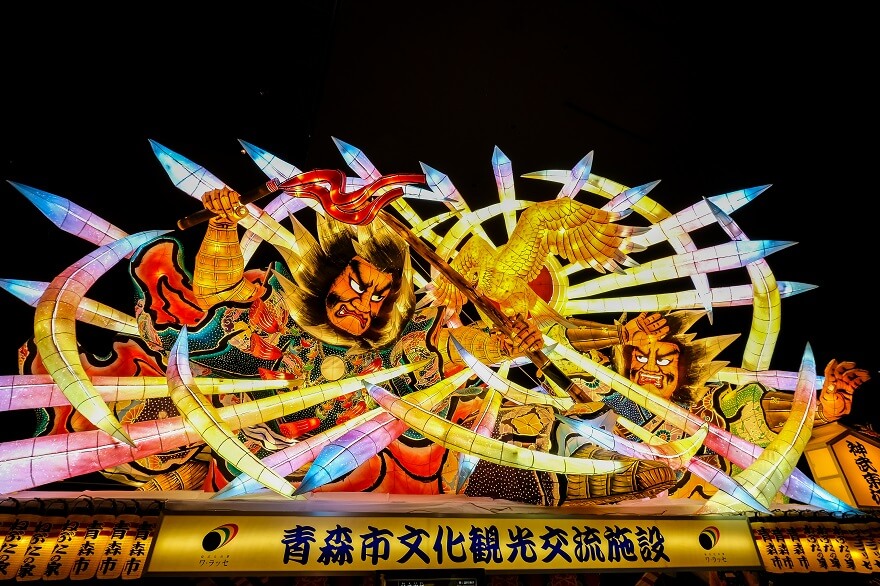
The Aomori Nebuta Festival is held from August 2nd to August 7th. It is a very popular festival that attracts more than 2 million tourists every year. In 1980, it was designated as an Important Intangible Folk Cultural Property of Japan.
The main event is the nighttime procession of “Nebuta.”Dashi floats carrying giant lanterns in the shape of warriors, Kabuki actors, and mythological figures parade through the city.
This “Nebuta” takes a year to make, and is like a huge work of art measuring 5m high and 9m wide. New ones are made every year, so no matter how many times you go to the festival, you can enjoy a different “Nebuta” each time.
The dancers called “Haneto” make this festival even more exciting. About 2,000 people jump and dance along with the chants of “Rassera, Rassera!” Mixed with the sound of the big drums, it is filled with tremendous heat and excitement.
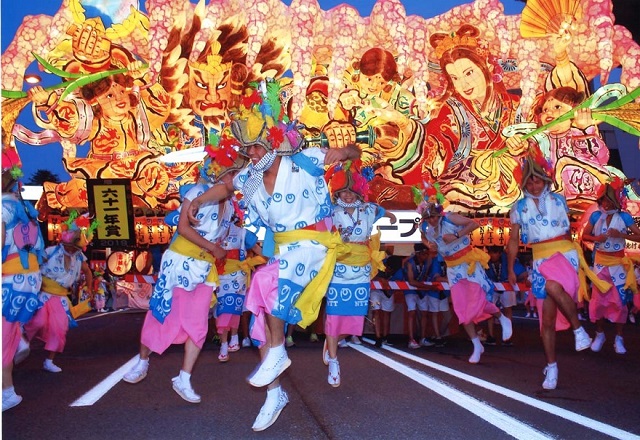
(Source: https://www.atca.info/)
Furthermore, this Haneto is open to the general public, so please join us and experience a Japanese festival.You can enjoy the Aomori Nebuta Festival 100 times more by wearing Haneto costumes and jumping and dancing with Japanese people.For details on how to participate, please refer to the official website below.
Aomori Nebuta Festival
Venue: Aomori City, Aomori Prefecture
Access: Aomori Station
Period: August 2nd to August 7th every year
Official site: https://www.nebuta.jp/
No. 4: Awa Odori (Tokushima City)
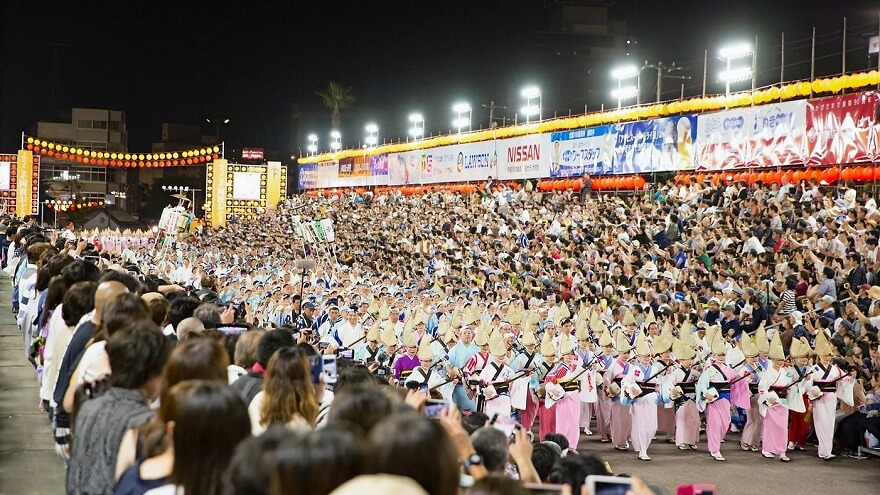
Awa Odori is a traditional performing art with a history of more than 400 years that originated in present-day Tokushima Prefecture. Today, Awa Odori festivals are held in various places outside of Tokushima Prefecture.
The authentic Awa Odori of Tokushima Prefecture is popular not only with Japanese but also with overseas tourists, and it is known that more than 1 million tourists visit every year.
In the Awa Odori, dancers parade through the city while dancing to the accompaniment of shamisen, flutes, drums, and other instruments. Men’s dances are powerful and dynamic. Women’s dances are characterized by graceful, supple movements and always smiling. Paid spectator seats are also available, making it a great festival for sightseeing.
Awa Odori
Venue: Tokushima City, Tokushima Prefecture
Access: Tokushima Station
Period: August 12th to August 15th every year
Official site: https://www.awaodorimirai.com/
No. 5: Kishiwada Danjiri Festival (Kishiwada City)
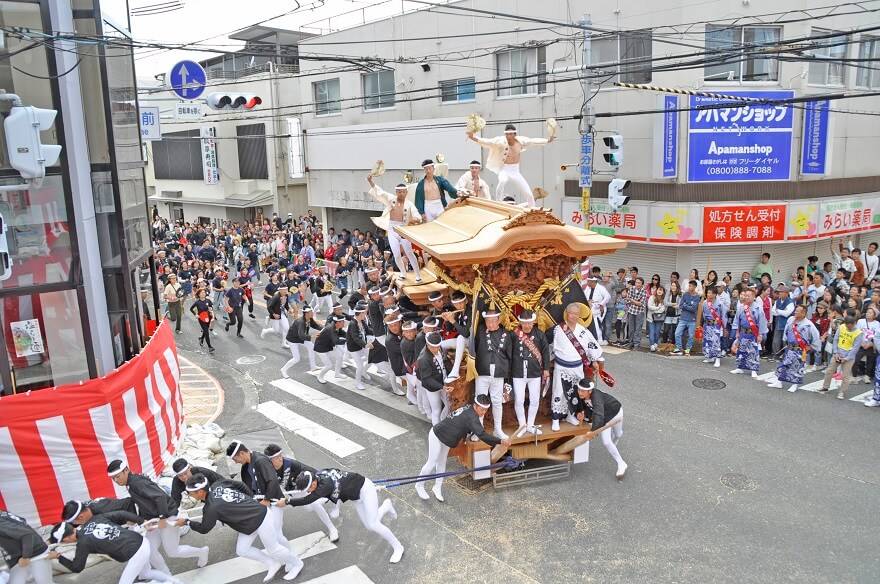
The Kishiwada Danjiri Festival is a festival with a history of over 300 years. A danjiri is a float on which men ride, and it is 4 meters high and weighs 4 tons. Approximately 500 to 1,000 people pull this danjiri and dash through the city.
The way they run through the curves of the city without slowing down is an overwhelming force that cannot be seen at other festivals.There are many videos on YouTube that draw danjiri, but when you actually see them, the power is completely different, so I definitely recommend going to see them.
Kishiwada Danjiri Festival
Venue: Kishiwada City, Osaka Prefecture
Access: Takojizo Station
Period: September to October
Official site: https://www.city.kishiwada.osaka.jp/site/danjiri/
No. 6: Sanja Matsuri (Taito Ward, Tokyo)
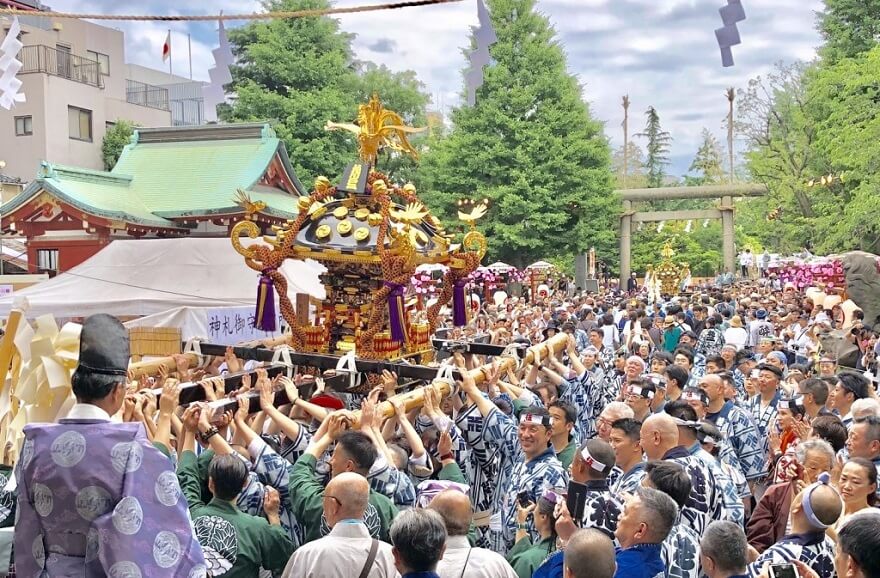
Sanja Matsuri is a festival held at Asakusa Shrine in May every year. The official name is “Asakusa Jinja Reitaisai”.
A feature of the Sanja Matsuri is the mikoshi (portable shrine) parade on the second and third days of the festival.On the second day, about 100 portable shrines are launched from the towns around Asakusa Shrine and headed for Asakusa Shrine. On the third day, three large portable shrines are launched from Asakusa Shrine and paraded through the town.
The sight of the men wildly carrying the mikoshi is impressive and worth seeing.
In addition to the mikoshi, the Sanja Matsuri is also characterized by the procession of people dressed in historical costumes called “daigyouretsu” parading through the streets.
Sanja Festival
Venue: Asakusa, Taito Ward, Tokyo
Access: Asakusa Station
Period: May
Official site: https://www.sanjasama.jp/
No. 7: Sendai Tanabata Festival (Sendai City)
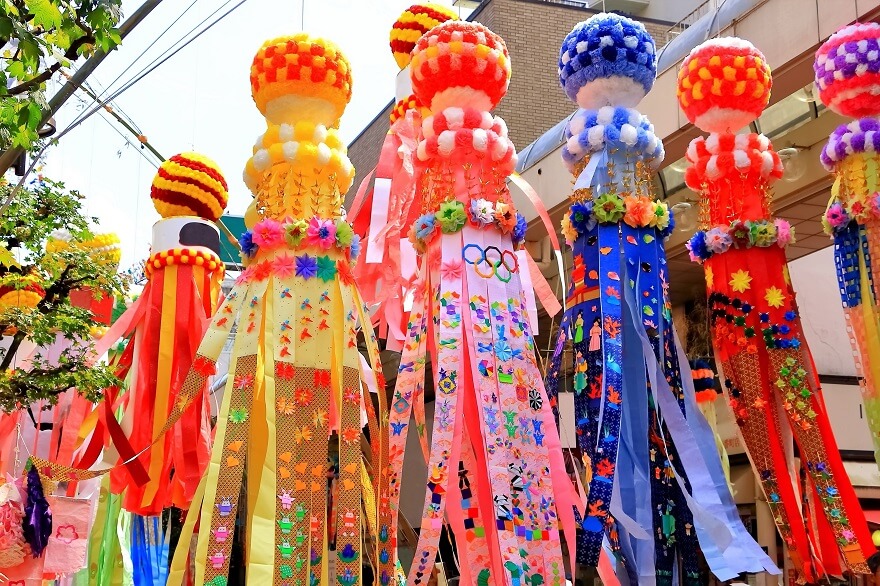
The Sendai Tanabata Festival is a traditional festival that has continued since the early Edo period (1603-1868).The festival is characterized by gorgeous Tanabata decorations displayed in the shopping district in front of Sendai Station.Each store prepares for several months in order to compete for luxury. During the festival, many people gather in Sendai to see the Tanabata decorations.
Sendai Tanabata Festival
Venue: Sendai City, Miyagi Prefecture
Access: Kotodai Koen Station
Period: August 6th to August 8th every year
Official site: https://www.sendaitanabata.com/
No. 8: Hakata Dontaku Port Festival (Fukuoka City)
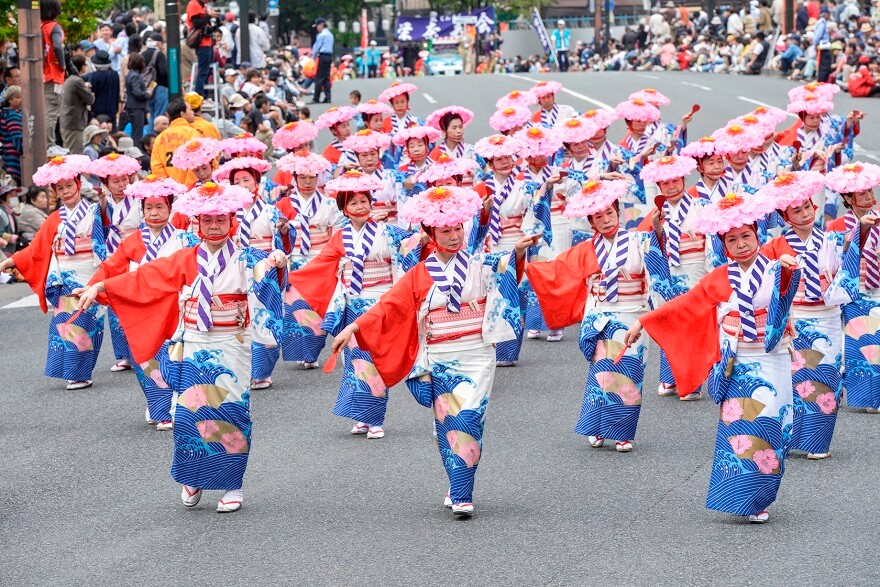
A feature of the Hakata Dontaku Port Festival is the rice scoop held by the dancers. People who participate in parades and dances hold rice scoops and clap them. The climax of the festival is the So-Odori, which begins in the evening of May 4th. Even if you don’t know dance, you can jump in and participate in the event.
Hakata Dontaku Port Festival
Venue: Fukuoka City, Fukuoka Prefecture
Access: Gofukumachi Station
Period: May 3rd and 4th every year
Official site: https://www.dontaku.fukunet.or.jp/
No. 9: Yosakoi Festival (Kochi City)
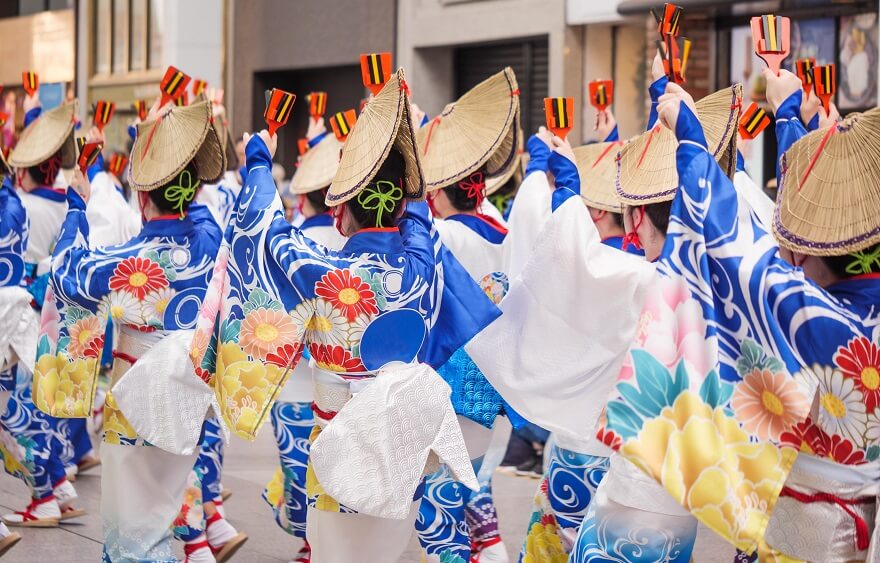
The Yosakoi Festival is characterized by a unique style of dancing with clappers in both hands.About 200 teams gather from all over Japan and dance around Kochi City. During the Yosakoi festival, the dancers are dancing from morning till night, so you will be able to see dancers wherever you go.
Yosakoi Festival
Venue: Kochi City, Kochi Prefecture
Access: Ohashi-dori Station
Period: August 9th to August 12th every year
Official site: http://www.cciweb.or.jp/kochi/yosakoiweb/
No. 10: Tenjin Festival (Osaka City)
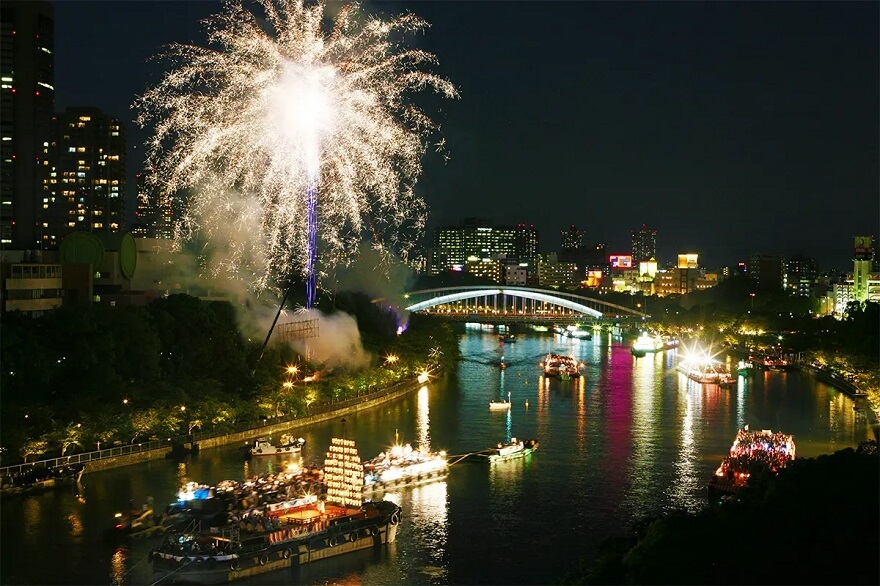
The Tenjin Festival is one of the three major festivals in Japan and has a history of over 1,000 years. The biggest highlight of the festival is the boat procession of more than 100 boats on the Okawa River. In addition, about 5,000 fireworks will enliven the festival.
It is held in the Okawa area near Tenmangu Shrine, and is also called the “fire and water festival” because the fireworks and bonfires are reflected on the surface of the river.
Tenjin Festival
Venue: Osaka City, Osaka Prefecture
Access: Osaka Tenmangu Station
Period: July 24th and July 25th every year
Official site: https://www.tenjinmatsuri.com/
No. 11: Akita Kanto Festival (Akita City)
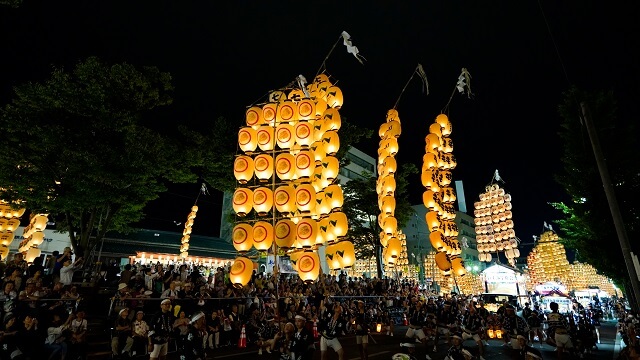
It is a traditional festival in which people proud of their skills strongly lift the kanto lanterns, which are many paper lanterns hanging from long bamboo poles, and parade through the streets.
Akita Kanto Festival
Venue: Akita City, Akita Prefecture
Access: Akita Station
Period: August 3rd to August 6th every year
Official site: https://www.kantou.gr.jp/
No. 12: Owara Kaze no Bon (Toyama City)
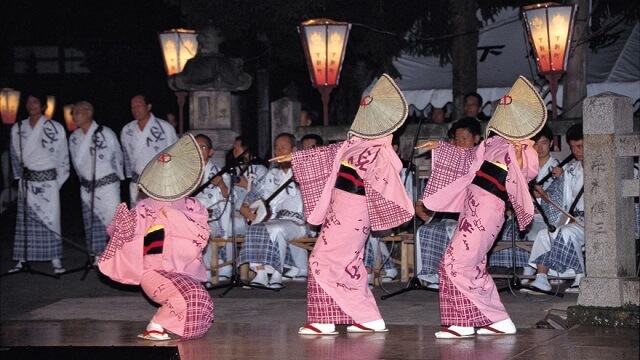
It is a traditional festival that is said to have continued in the Yatsuo area of Toyama City since around 1700. Unlike other festivals, it is characterized by being a “quiet festival” without loud shouts. Both men and women wear deep woven hats and dance to hide their faces.
Owara Kaze no Bon
Venue: Toyama City, Toyama Prefecture
Access: Etchu Yao Station
Period: September 1st to September 3rd every year
Official site: https://www.yatsuo.net/kazenobon
No. 13: Okinawa Zento Eisa Festival (Okinawa City)
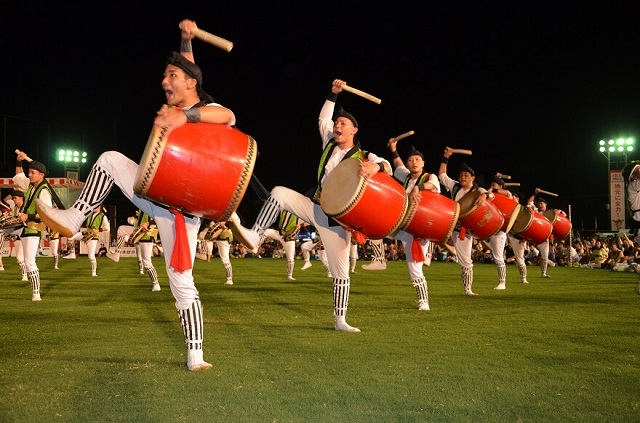
Eisa is a traditional Okinawan dance. Each youth association in each district of Okinawa has its own “form of dance”. At this festival, the youth associations from each district gather to showcase their kata. Eisa dancing dynamically with drums is so powerful that just looking at it will get you excited.
Okinawa Zento Eisa Festival
Venue: Okinawa City, Okinawa Prefecture
Access: Naha Airport → Okinawa Minami IC
Period: August
Official site: https://www.zentoeisa.com/
No. 14: Kanda Festival (Chiyoda Ward, Tokyo)
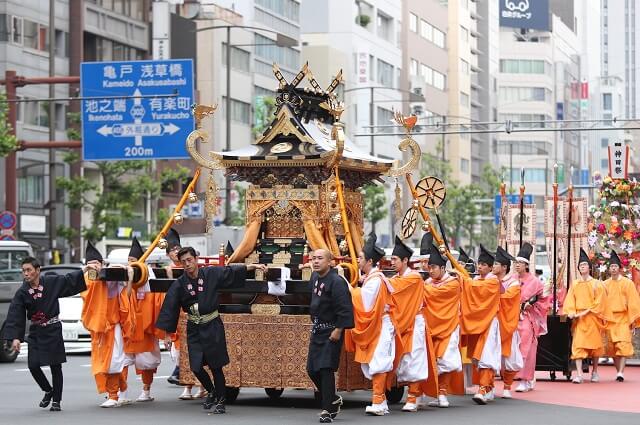
The Kanda Festival is one of the three major festivals in Japan. More than 200 mikoshi (portable shrines) parade through the streets of Tokyo. On Chuo-dori in Akihabara, you can see the scenery of portable shrines as far as you can see the road.
Kanda Festival
Venue: Chiyoda Ward, Tokyo
Access: Suehirocho Station, etc.
Period: May (Odd-numbered years: Main festival / Even-numbered years: Kagematsuri)
Official site: https://www.kandamyoujin.or.jp/kandamatsuri/
No. 15: Yamagata Hanagasa Festival (Yamagata City)
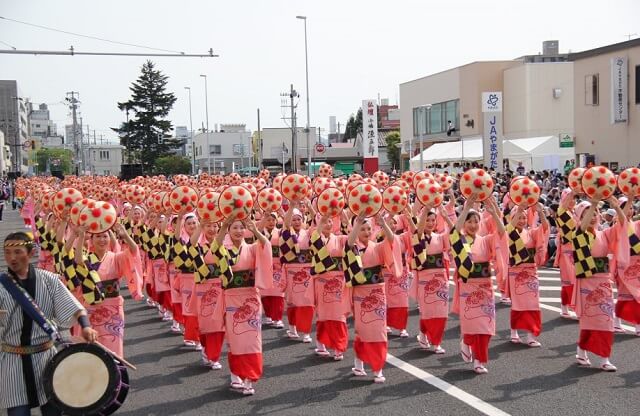
It is a very big festival with about 14,000 dancers and 1 million tourists. It is characterized by holding a hat decorated with flowers and dancing to the sound of drums, and you can feel the Japanese “beauty”.
Yamagata Hanagasa Festival
Venue: Yamagata City, Yamagata Prefecture
Access: Yamagata Station
Period: August 5th to August 7th every year
Official site: https://www.hanagasa.jp/
No. 16: Nagasaki Lantern Festival (Nagasaki City)
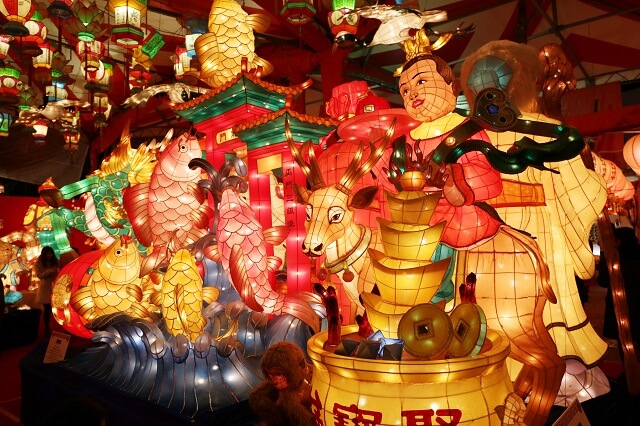
It is a festival held in Nagasaki Prefecture, Japan, to celebrate the Chinese New Year. Approximately 15,000 lanterns (Chinese lanterns) welcome visitors. During the festival, many traditional Chinese events are held.
Nagasaki Lantern Festival
Venue: Nagasaki City, Nagasaki Prefecture
Access: Shinchi-Chukagai Station
Period: Late January to early February
Official site: https://rantan.nagasaki-visit.or.jp/
No. 17: Asakusa Samba Carnival (Taito Ward, Tokyo)
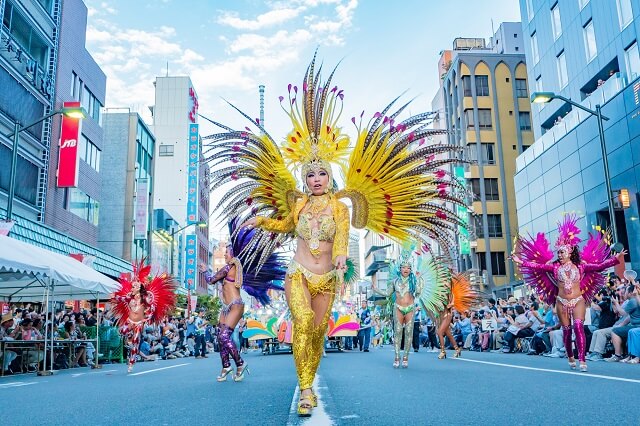
This festival reproduces the samba parade called “Escola de Samba” held in Rio de Janeiro, Brazil on the main street of Asakusa. Teams from all over Japan gather in Asakusa to compete in samba.
Asakusa Samba Carnival
Venue: Asakusa, Taito Ward, Tokyo
Access: Asakusa Station
Period: Last Saturday of August
Official site: https://www.asakusa-samba.org/
No. 18: Nankin-machi Shunsetsu Festival (Kobe City)
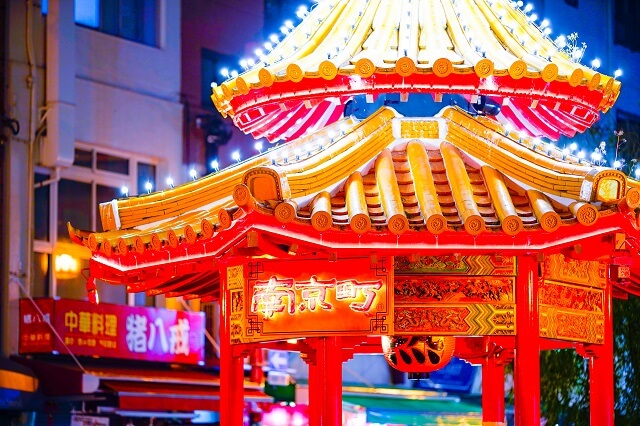
It is a festival that celebrates the Chinese New Year, the Spring Festival. You can enjoy a Chinese-style festival with firecrackers and dragons and lions dancing.
Nankin-machi Shunsetsu Festival
Venue: Chuo Ward, Kobe City, Hyogo Prefecture
Access: Hanshin Motomachi Station
Period: January and February
Official site: https://www.nankinmachi.or.jp/event/shunsetsu/
No. 19: Jidai Festival (Kyoto City)
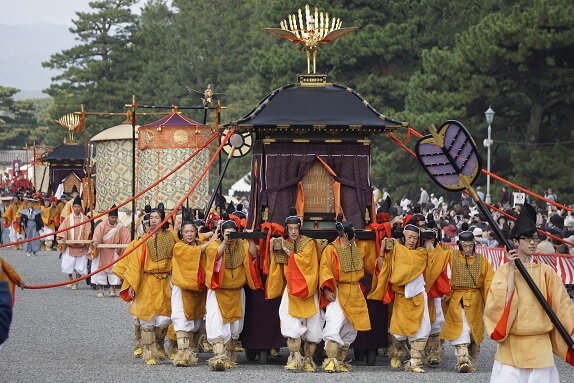
For more than 1,000 years in Japan, the capital was Kyoto instead of Tokyo. The 1,000 years are divided into eight eras, and people wearing costumes and tools that reproduce each era hold a parade. It is a festival where you can feel the history of Japan.
Jidai Festival
Venue: Kyoto City, Kyoto Prefecture
Access: Higashiyama Station, Sanjo Station, Jingu Marutamachi Station
Period: October 22nd every year
Official site: http://www.heianjingu.or.jp/festival/jidaisai.html
No. 20: Chichibu Night Festival (Chichibu City)
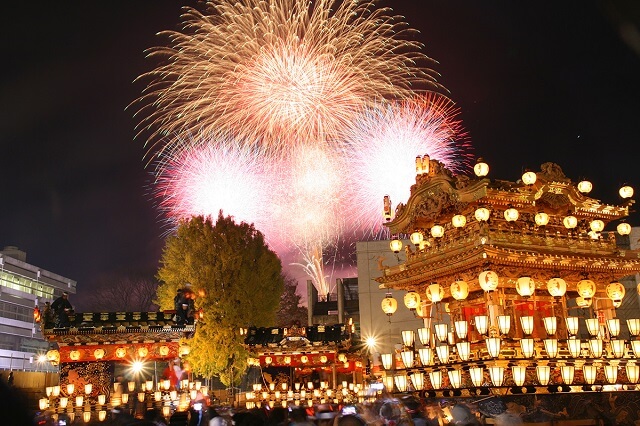
This festival is characterized by floats decorated with paper lanterns and winter fireworks. It is an extremely gorgeous festival and is registered as an Important Intangible Folk Cultural Property of Japan.
Chichibu Night Festival
Venue: Chichibu City, Saitama Prefecture
Access: Chichibu Station
Period: Every year from December 1st to December 6th
Official site: http://www.chichibu-jinja.or.jp/yomatsuri/
Due to space limitations, I have only introduced a small portion of the festivals held in Japan. There are many other festivals held in Japan, so please go to various festivals and feel the energy of Japan.


Comment